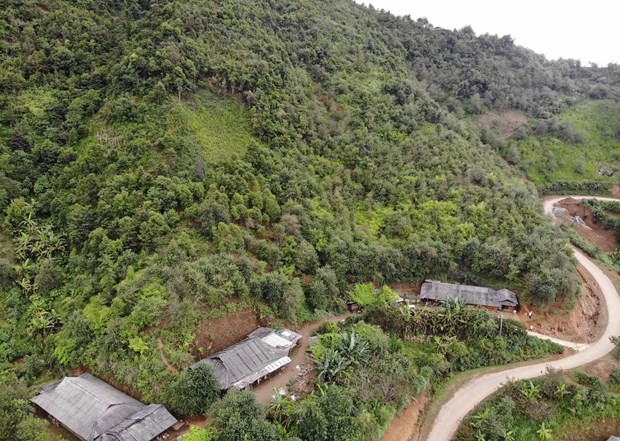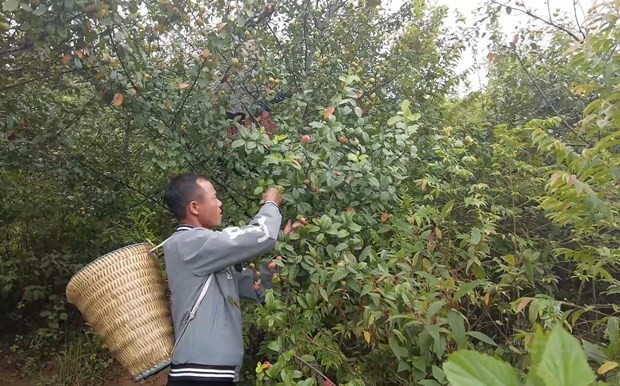(VOVWORLD) - Stretching across mountain slopes between 1,000 and 2,000m above sea level, Son La province’s forests of docynia indica tree are in the harvest season. The docynia indica tree, known in Vietnamese as 'tao meo', provides a livelihood for the local people and increases forest cover.
 A docynia indica covered hill in the mountain commune of Xim Vang in Bac Yen district, Son La province. (Photo: VNA) A docynia indica covered hill in the mountain commune of Xim Vang in Bac Yen district, Son La province. (Photo: VNA)
|
The tree grows mainly in the mountain districts of Thuan Chau, Muong La, and Bac Yen, where high humidity and low temperatures create clouds and fog all year round.
The docynia indica produces fruit from the end of the eighth to the end of the tenth lunar month.
During this time the orchards of Mua A Su in Bac Yen district, attract many traders.
Su told us his family has more than 10 hectares of docynia indica which they have been harvesting for 5 years. This has improved their living conditions significantly.
He recalled, “My family was very poor as I only grew rice. But after I began to grow fruit trees, especially docynia indica, we have been able to cover our basic expenses and the children’s school fees. For the past 5 years, we’ve picked 5 to 10 tons or more, earning a net profit of 1,300 to 1,700 USD per year.”
Visitors to Son La who try the docynia indica fruit never forget its taste. Under the lemon yellow or tan skin, the fruit has a special aroma and a sweet and sour taste. Sliced and dried docynia indica fruit is used to treat digestive disorders, high blood pressure, insomnia, and diabetes.
Recently, many companies have purchased the fruit to make juice, wine, and jam. Docynia indica trees which used to only grow wild, are now cultivated using scientific farming techniques.
Song A Long of Bac Yen district told us, “With the help of communal agronomists, my family’s one-hectare farm now regularly produces fruit. This tree has brought us a great deal of benefit.”
“We can harvest and sell fruit while increasing the commune’s forest cover. We have received financial support from the local administration and will try to grow more docynia indica trees.”
 A farmer in Xim Vang commune harvests docynia indica fruits. (Photo: VNA) A farmer in Xim Vang commune harvests docynia indica fruits. (Photo: VNA)
|
Bac Yen district has 2,600 hectares of docynia indica, producing 1,900 tons of fruit per year. The district government provides technical advice to the growers.
Giang A Nenh, Chairman of Xim Vang hamlet’s People's Committee, said that after 2 years of COVID-19, fruit sales are now recovering.
“The docynia indica is very important to the people of Xim Vang. It’s their main source of income. Sales are much easier than during the two years of the pandemic. Traders come to buy all we produce. This year’s price is 25 cents a kilo, triple last year’s price,” said Giang A Nenh.
To increase profits, Bac Yen district is expanding cultivation areas, trade promotion activities, and markets, and encouraging businesses to build local processing facilities.